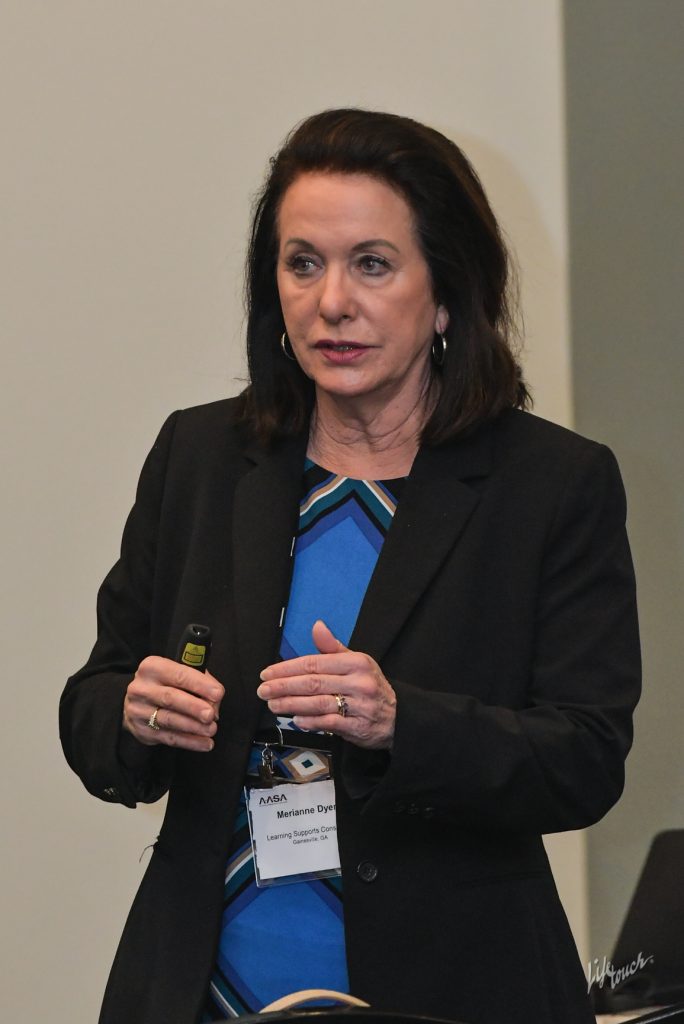Most Saturday mornings are spent in bed or sleeping in late, but superintendents from across the country were up early Saturday for an AASA conference session on aligning technology and digital resources in rural school districts.
Rural school districts face different specific challenges in being offered to technology and digital resources as a learning support for their students.
Merrianne Dyer, retired superintendent from Gainesville, Ga., and a specialist with the National Dropout Prevention Center, explained the purpose is understanding the learning support framework and how they apply it to get to technology wise.
“Rural isolations, limited resources, advance placement courses … All of those are barriers to learning that are not solved in the instructional area,” said Dyer. “They’re solved by aligning and analyzing what resources you have so you could spend the money on things that matter.”
Three districts — Jasper County, S.C., Grant Parish, La., and Macon County, Ala., were represented at the session by superintendents, Donald Andrews, Sheila Jackson and Jacqueline Brooks, respectively.
Each district leader shared his or her experiences and strategies they used to leverage partnerships to provide equitable opportunities and offer access for students in rural areas.
Some of the barriers that Jasper County Schools District faced were the lack of infrastructure, the knowledge teachers lacked and the limitation of resources.
“It was a complete technology vacuum,” said Andrews. “There was no direction, we had no policies, we had no procedures … and the procedures we had were not followed.”
Many goals were addressed such as putting one-to-one technology devices in the hands of students, setting high expectations and accountability for teachers and staff for using the technology and pursuing funding opportunities.
Andrews said the process starts with the board of education and superintendent. “Once a computer is taken out of a box, it’s almost outdated,” said Andrews. “It really isn’t, but it’s not far from it.”
In contrast, Grant Parish Schools had severe basic student needs owing to poverty while Jasper County schools leaned more to the technological needs.
“For our technology, unfortunately we couldn’t go down to the local McDonald’s because we don’t have one,” said Andrews.
Brooks said his advice would be to know the latest industry specifics for equipment, ensure access to students and look for new outside funds.
“The learning support pathway professional development is a tool for you to use to have outside assistance, come in customize to your district and align what you’re doing,” said Dyer. “Map what your needs are versus what you are doing, then analyze how your expenditures are being used and to help you develop a plan to address that.”
(Victoria Leuang, a senior journalism major at Middle Tennessee State University, is an intern with Conference Daily Online).

